One of the most famous Renaissance sculptors in history started out his career as a young boy copying famous Renaissance paintings in Florence, Italy.
Michelangelo di Lodovico Buonarroti (1475-1564) grew up at the height of the Renaissance period, a time when the transition away from medieval art was just about completed.
Florence was at the center of this all, a great place to be for a young prodigy. Little did people in the city know that this Italian artist would become one of the most renowned artists to have ever lived.
In this article, we take a closer look at some of the most interesting facts about The Torment of Saint Anthony by Michelangelo, one of the most fascinating artworks in the artist’s oeuvre.
1. It was painted while Michelangelo was still a young teenager
Michelangelo was born on March 6, 1475, in the small town of Caprese in the Tuscany region of central Italy. This town is located near Arezzo and is now known as “Caprese Michelangelo.”
His family was relatively well off and he was sent to Florence to pursue his Humanist studies. He wasn’t interested in grammar but rather spent his days copying famous paintings.
He officially started his apprenticeship at the age of 13 and started sculpting his first reliefs in the 1490s.
He completed The Torment of Saint Anthony in the late 1480s, probably between 1487 and 1488. This was a time when the artist was only 12 to 13 years old.
He eventually sculpted until the day he died in 1564, hacking away at the Rondanini Pietà at the age of 88.

2. It depicts a popular medieval legend derived from various sources

The painting depicts Saint Anthony (251-356 A.D.), a Christian monk from Egypt who became a saint shortly after he passed away at the extremely old age of 105.
He’s one of the most famous of all Deserts Fathers, monks who lived a reclusive life in the desert. He’s sometimes referred to as “The Father of all Monks.”
The Torment of Saint Anthony is also referred to as “The Temptation of Saint Anthony” and depicts the moment that he is being assaulted by demons in the desert.
He resisted the temptation of these hideous beasts and was eventually flown out of the desert by angels. The painting depicts a snapshot in which he is attacked.
This subject was part of the “Golden Legend,” a medieval collection of over 1,000 manuscripts that were very popular in the late Middle Ages.

3. It’s the earliest extant painting in the oeuvre of Michelangelo
Michelangelo used oil and tempera to produce this panel painting. Oil is slow drying while tempera is much faster to dry.
Although the Flemish Primitives and more specifically Jan van Eyck (1390-1441), had already mastered using oil multiple decades earlier, tempera was still a pretty common painting material in Italy until the late 15th century.
There are only 4 extant panel paintings by Michelangelo. He mainly focused on sculpting, although he also produced world-famous frescoes in the Sistine Chapel.
Of these 4 panel paintings, this is the only surviving one that he produced during his adolescent years. This notion also makes it the earliest extant panel painting by the artist.
Just a decade later, he started working on the “Pietà“, one of his most famous sculptures located in St. Peter’s Basilica in Rome.
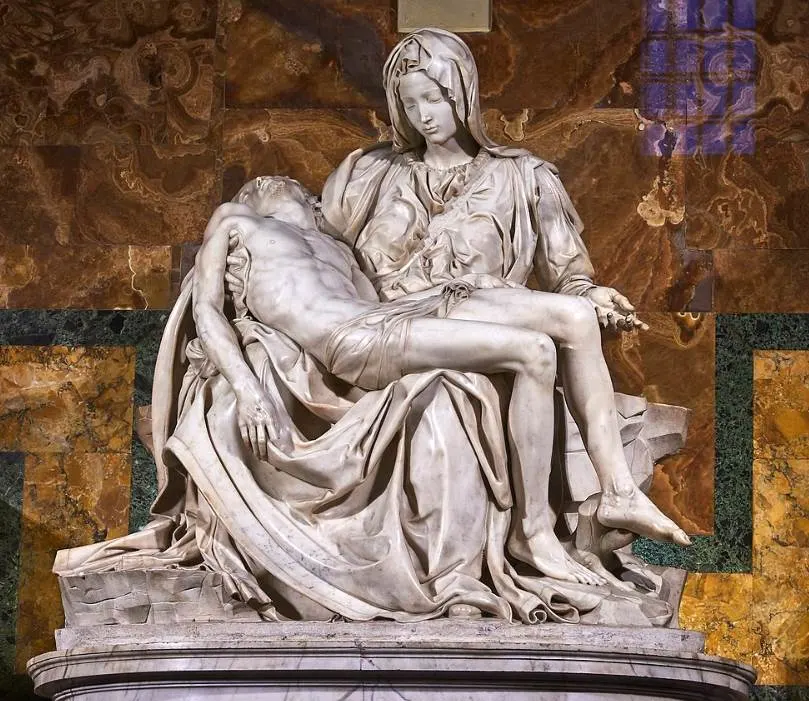
4. The young artist was inspired by an engraving of the same subject
Florence was the center of the Renaissance and the city where the revival of classical and Humanist ideals emerged in the 14th century.
Like most young aspiring artists, he learned the trade by copying the most famous paintings in the city. He didn’t have to look far because most churches in Florence were already decorated with monumental masterpieces.
What’s remarkable about The Torment of Saint Anthony is that he didn’t copy a famous painting but rather an engraving of this subject.
This engraving was completed between 1470 and 1475 by Martin Schongauer (1450-1491), an artist from the Alsace region in modern-day France who was mostly inspired by medieval Gothic artists.
As you can see, Michelangelo definitely produced an accurate copy of this popular engraving.
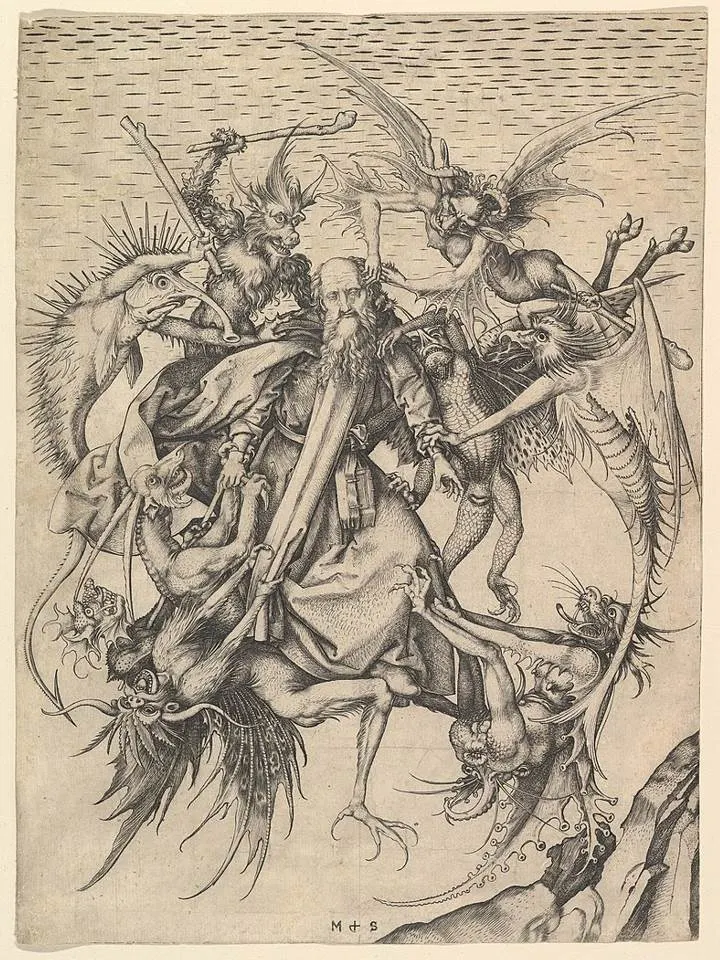
5. Michelangelo integrated two additional elements in his oil painting
Although the teenage artist copied most elements inside his panel painting, he did include several additional elements.
According to 16th-century art historian Giorgio Vasari, he went to the local fish market to copy fish scales. These can be found on the backs of several demons in the painting.
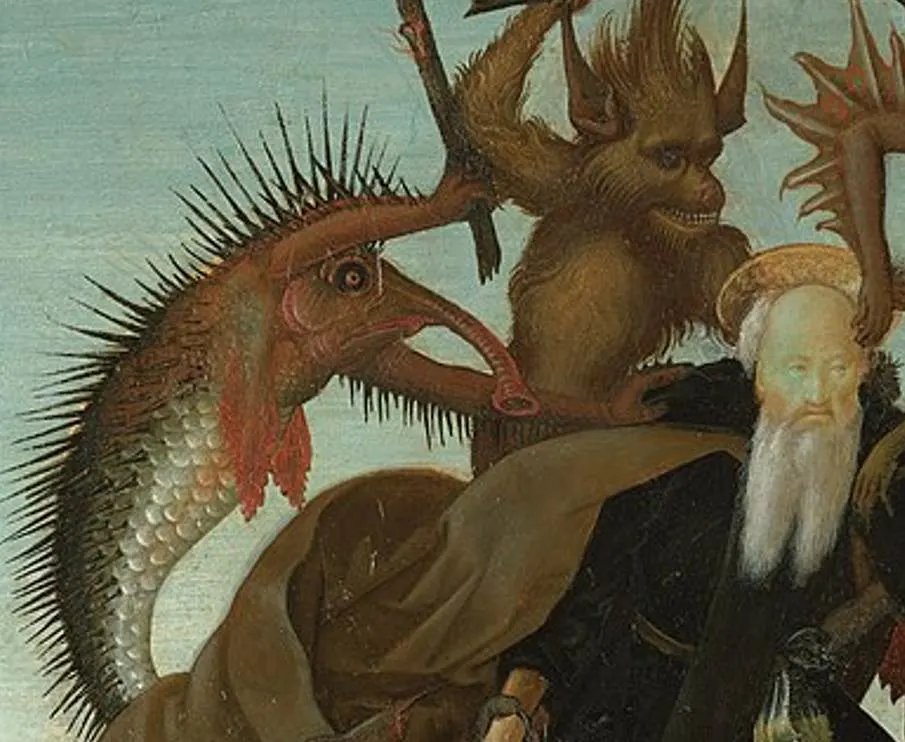
Another element that wasn’t included in the engraving was the landscape in the background. We can see a boat in a river and a spire of a church.
The mountainous landscape also features plenty of trees, a remarkable sight because this scene is supposed to be taking place in the desert.
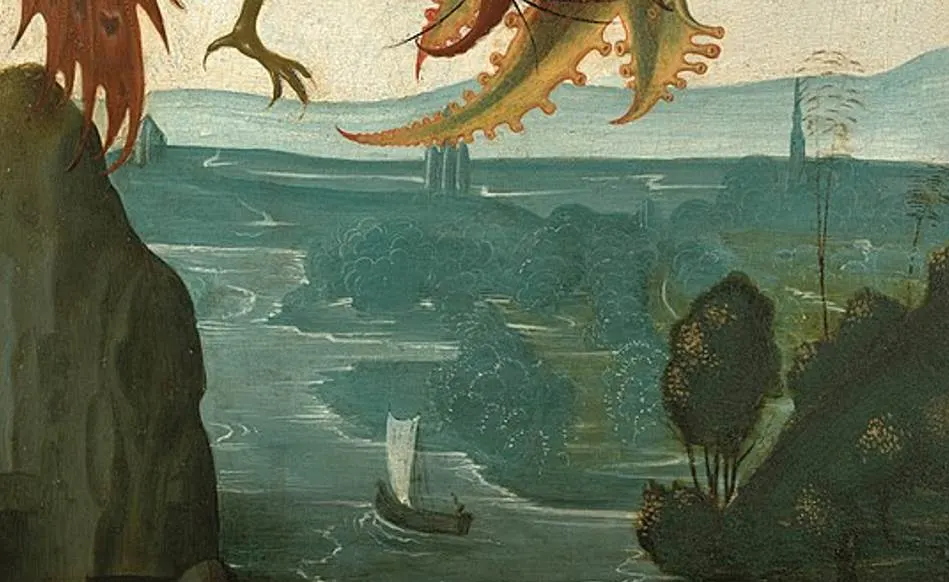
6. It was long believed to be by the hand of the young artist’s master
The painting was completed around the same time that Michelangelo became an apprentice in the workshop of Domenico Ghirlandaio (1448-1494).
He was an Italian painter who was part of the so-called third generation of Renaissance artists. This means that his style was already very advanced compared to art produced during the Middle Ages.
He ran a successful workshop that trained numerous pupils, including the young Michelangelo. This sometimes makes it hard to determine who painted which painting.
An American art dealer bought this painting at an auction at Sotheby’s in 2008 for $2 million. The painting was still credited to Ghirlandaio at the time.
When the painting was cleaned and examined at the Metropolitan Museum of Art in New York City, it was determined that it was indeed by the hand of Michelangelo, quite a stunning discovery!
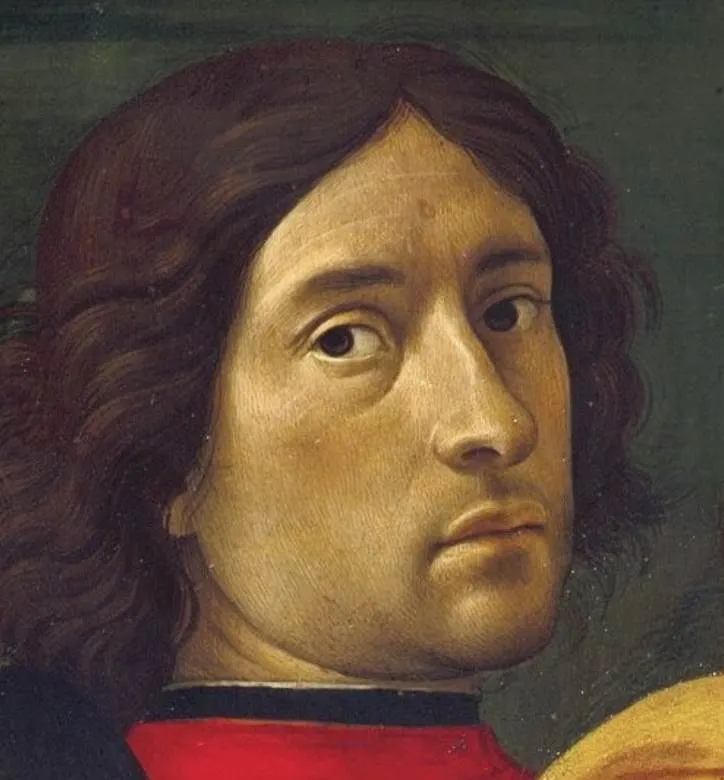
7. How big is The Torment of Saint Anthony by Michelangelo?
Michelangelo never liked oil paintings and mainly focused on his other talents which were sculpting and architecture. The few panel paintings he produced are all relatively small in size.
The same applies to this small work of art which has dimensions of 47 × 35 centimeters (18.5 in × 13.25 inches).
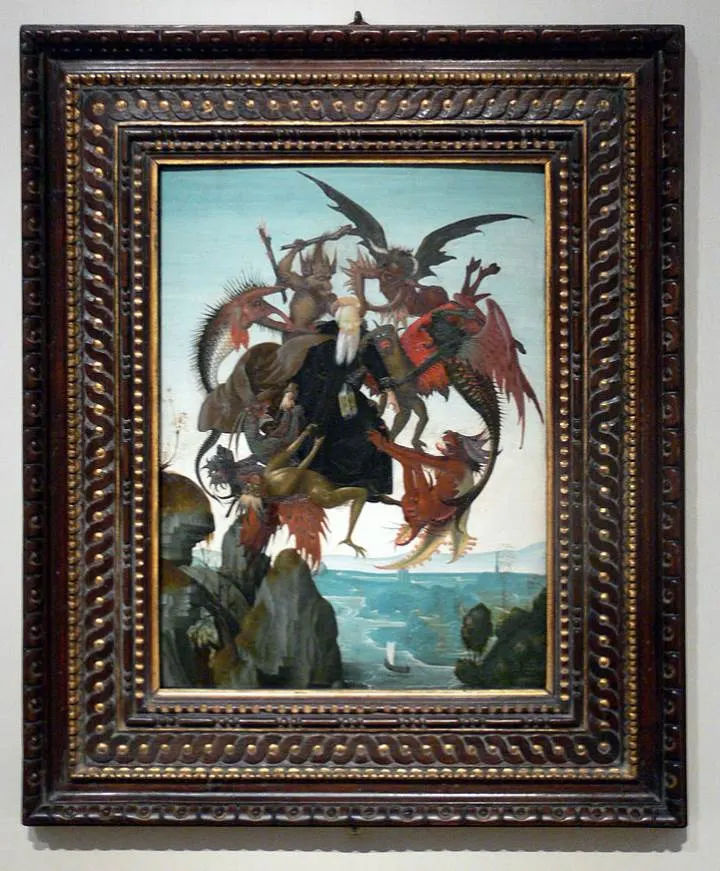
8. Where is the painting located today?
The painting multiplied in value the moment it was confirmed that it was indeed by the hand of the very young master. After all, it was certainly the earliest known work by the hand of one of the most famous artists in history.
The painting was quickly sold for about $6 million and it became part of the amazing collection of the Kimbell Art Museum.
This museum is located in Fort Worth, Texas, and houses a relatively small collection of 350 masterpieces produced by some of the greatest artists to pick up brushes.

